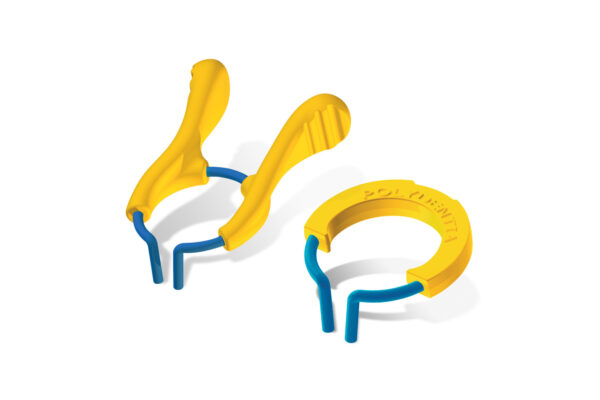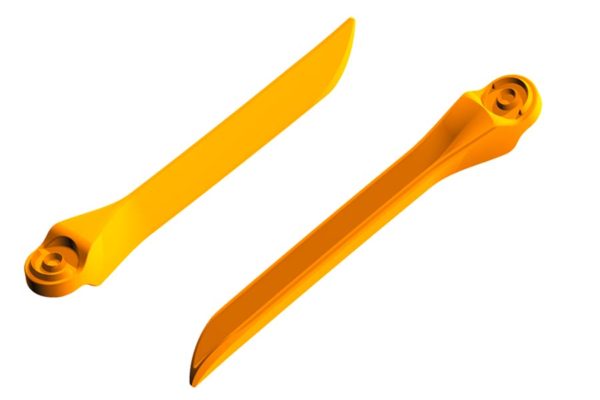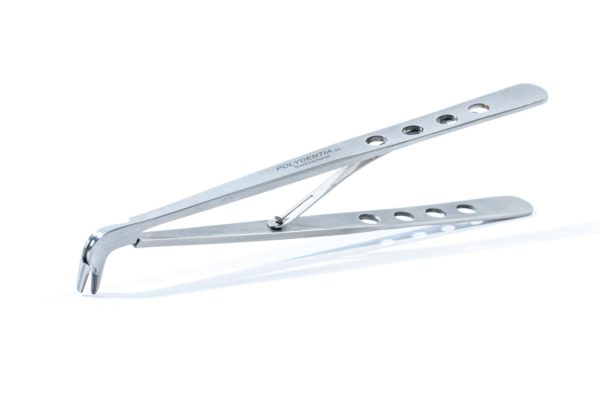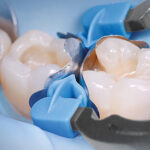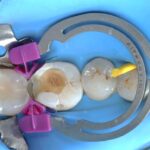25 Mar Dr. Marina Papachroni – Class II restoration of a primary molar – myClip Junior
Class II restoration of a primary molar with myClip Junior
by Dr. Marina Papachroni
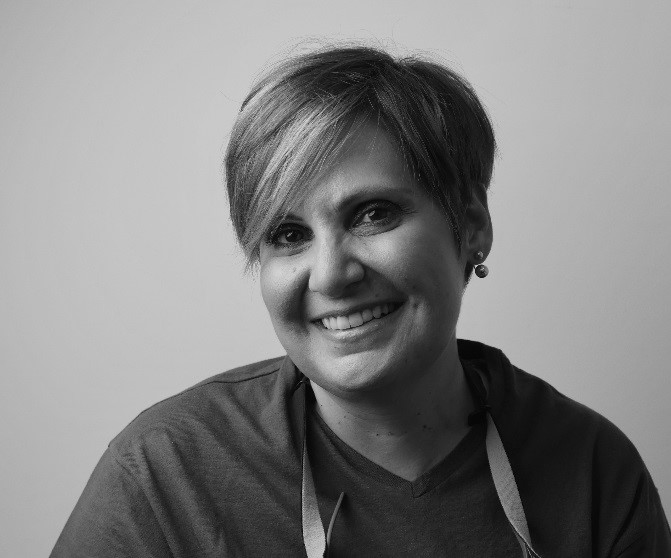
Dr. Marina Papachroni
Marina Papachroni graduated in 1995 from dental school at the University of Athens. She completed a three-year post-graduate program where received her pediatric dentistry specialization certificate in 1999 and a two-year master’s degree in dental materials in 2001 from the same university. Thereafter, she has attended numerous congresses, courses and continuing education programs. She is the Treasurer of the Board of the Hellenic Academy of Clinical Dentistry and a member of the Hellenic Society of Pediatric Dentistry, European Academy of Pediatric Dentistry and International Association of Pediatric Dentistry. Lately, she is lecturing on Bioactive Materials, Restorative Pediatric Dentistry and Pulp Therapy of Primary teeth. The current focus of the clinical research is Bioactive Restorative Materials. Dr. Papachroni runs her private practice in Patras, Greece, with emphasis on aesthetic and microscopic pediatric dentistry.
clinical case
The young patient came to our attention for a periodic control. The preliminary analysis revealed a class II carious lesion on molar 84, distal and a class I carious lesion on molar 85.
Because of the reduced crown height, we decided to improve the ring stability using the myClip Junior in combination with the provided extremities myTines Junior and proceed with a direct composite restoration of the occlusal and distal interproximal morphologies.
The following images shows the step-by-step restoration procedure using Polydentia myJunior kit.
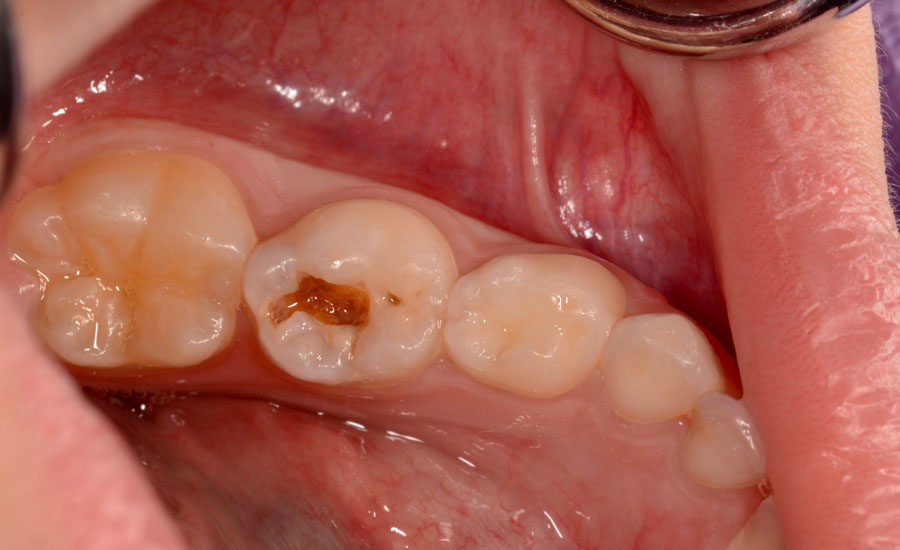
1: Pre-operative situation showing a class I carious lesions on primary molar 85 and a class II on 84.
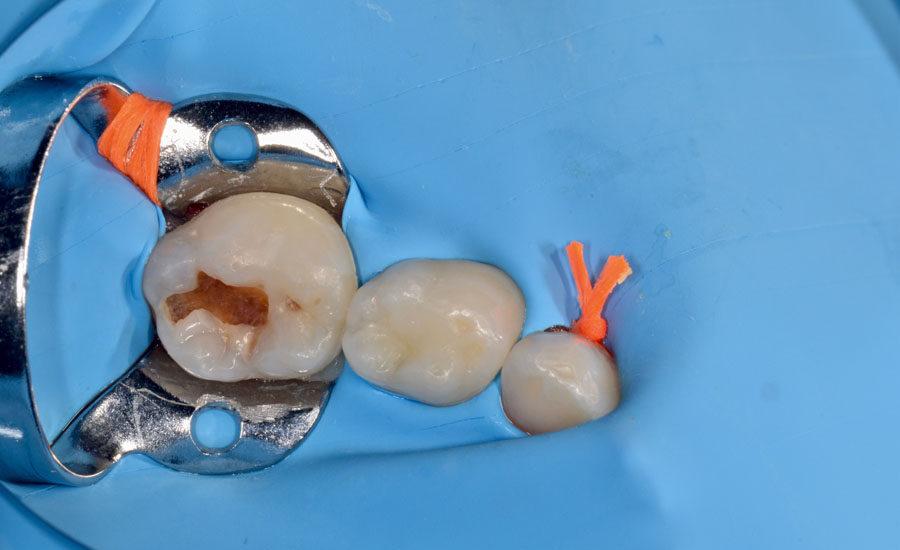
2: The view after rubber dam isolation.
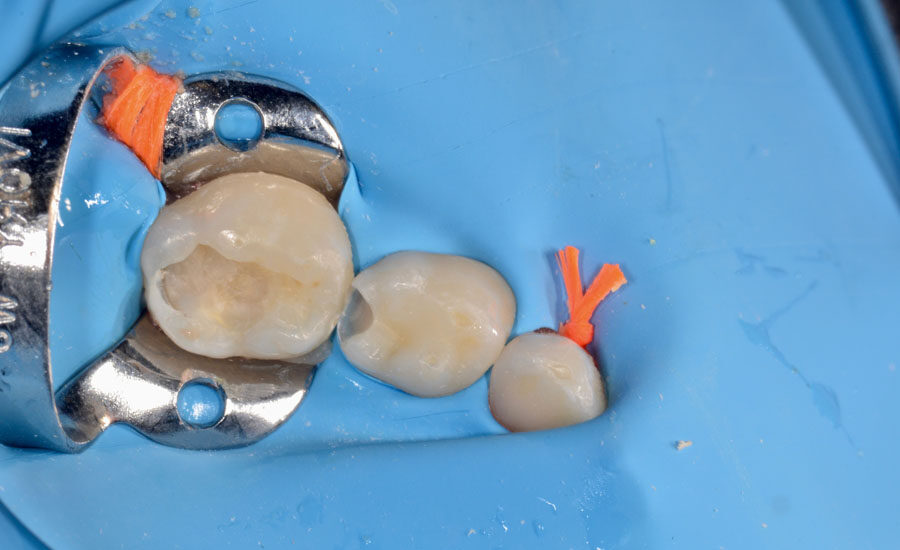
3: The clinical situation after the preparation of the cavity, cleaned with air abrasion and disinfected.
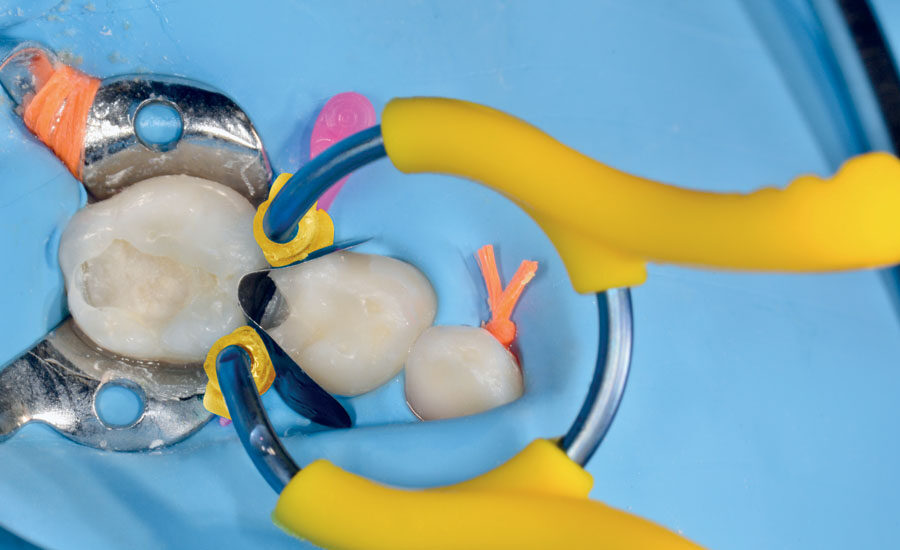
4: Primary molar 84 equipped with myClip Junior ring, LumiContrast matrix and myWedge. myClip Junior in combination with myTines Junior and myWedge provides a reliable and stable solution for the restoration of small primary teeth. A common problem when dealing with primary dentitions is the difficulty to completely insert a wedge because of the small cervical spaces. The hollow V-shape of the myWedges allow them to compress, allowing an easy placement and improved matrix adaption to the cervical walls.
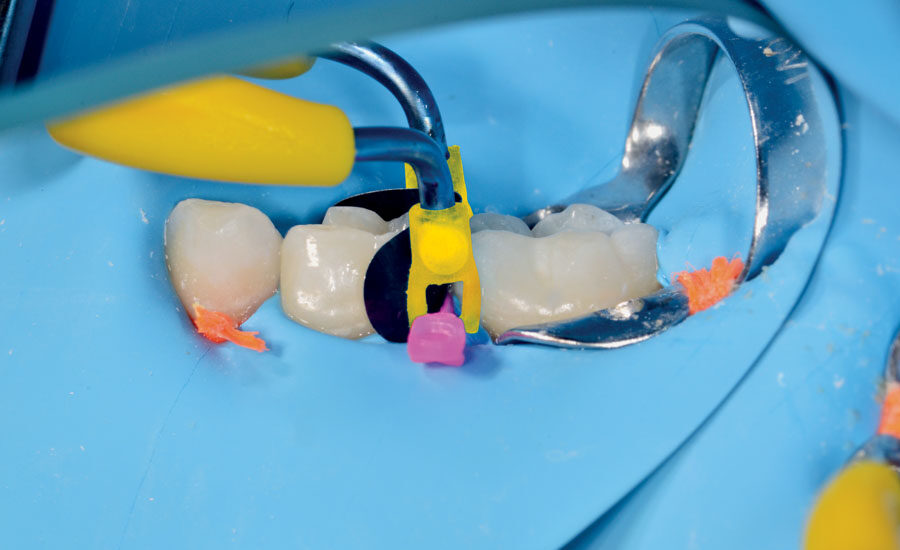
5: Labial view of the clinical situation; the geometry of the myTines Junior carefully embraces the wedge preventing the spring off effect of the ring even in case of younger patient with very low dental crown height.
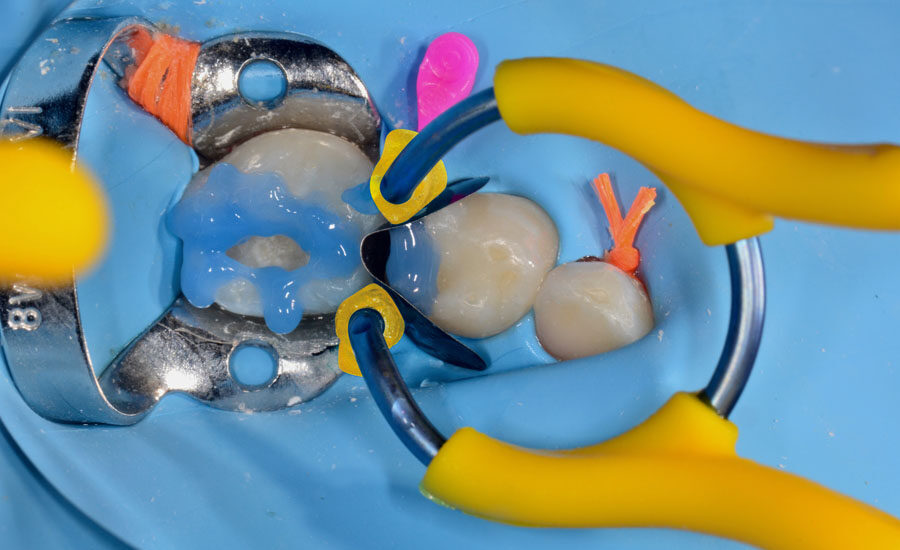
6: Enamel margins have been etched using a standard 35% phosphoric acid solution.
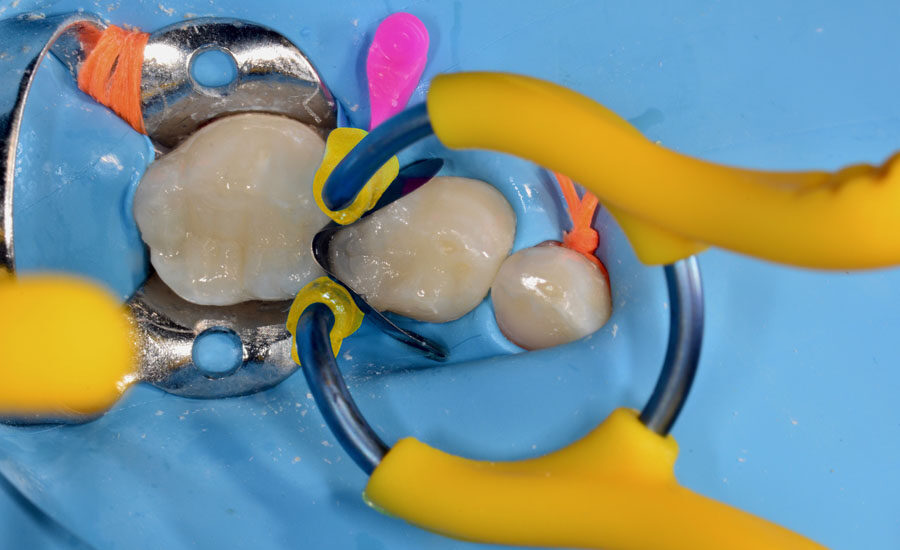
7: Both cavities were filled with composite resin. We then modelled the occlusal surfaces, and light cured the filling material.
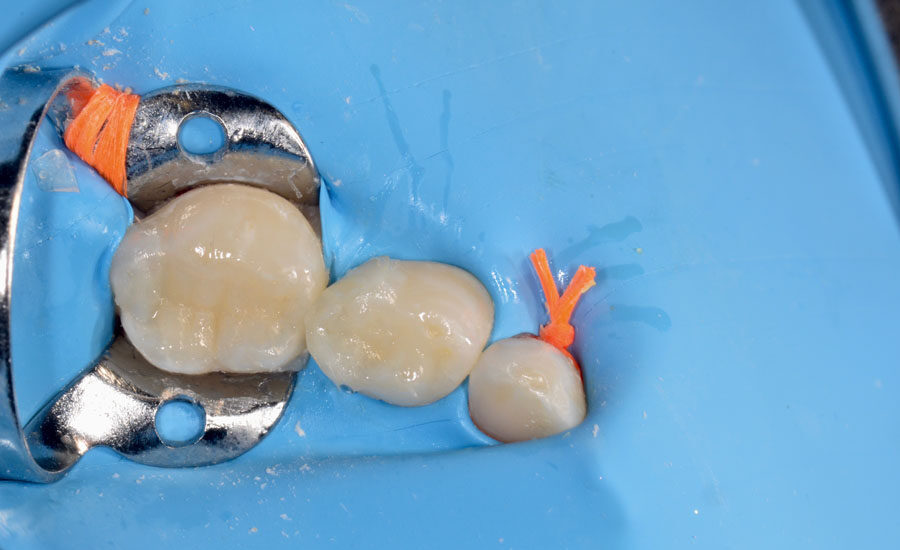
8: myClip Junior, myWedge and LumiContrast matrix were removed before proceeding with finishing and polishing procedures.
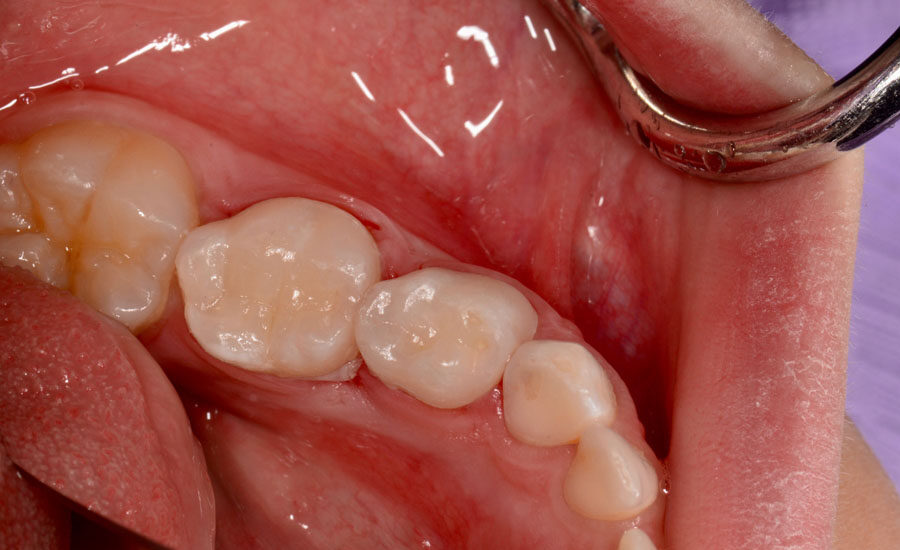
9: Final image of the restoration immediately after rubber dam removal
conclusion
MyClip Junior ring is designed especially for primary and young permanent teeth. Its accurate adaptation to the interproximal areas simplifies the finishing procedures. In case of younger patients, the extremities myTines Junior make the ring more stable and easier to adapt, preventing the spring off effect.
Also, it is obvious that with myClip Junior ring we got better contact points. I regard myClip Junior as an optimal solution for paediatric treatments. It allowed me to achieve an ideal restoration with less efforts and with considerable chair-time savings.
other clinical cases
-
Class II adjacent cavities on 1st and 2nd molars – QuickmatFIT anatomical sectional matrices & myRing Forte – Dr David Gerdolle
A 28-year-old female patient, without any systemic medical conditions presented with a carious lesion affecting both molar 46D and 47M. The following case illustrates the direct composite restoration of the lesion using the Polydentia QuickmatFIT anatomical sectional matrices in combination with myRing Forte and myWedge plastic v-shaped wedges....
-
Class II cavity direct composite restoration on a young permanent premolar – myClip 2.0 – Dr Marina Papachroni
For young patients rebuilding the anatomy in class II cavity restorations is a major issue but not making too many occlusal adjustments after finishing the layering procedures is one of the same importance aspects. The following images show the step-by-step treatment we performed for treating decay on the upper first premolar of a 15-year-old teenager. ...
-
Class II cavity direct restoration on young permanent molar with myQuickmat Forte – Dr Marina Papachroni
Class II (interproximal) decay involves the proximal surface of a posterior tooth and it is a common occurrence in many dental patients. One challenge for the clinician is to accurately recreate a physical contact to the adjacent tooth and, at the same time, to restore proper interproximal anatomic form. This case involves a teenager 16 years old with an interproximal lesion in his left lower molar (#36)....
-
Class II direct composite restoration on first premolar – QuickmatFLEX sectional matrices and myClip Junior – Dr Marina Papachroni
A male teenager came to our office feeling pain in the upper left quadrant. We proceeded with a Class II restoration of the first premolar without removing brackets. The following images show the step-by-step direct composite restoration procedure using the premolar sectional matrix QuickmatFLEX in combination with the paediatric sectional matrix ring myClip junior. ...
-
Class II restoration of a primary molar – myRing Junior – Dr Sabová
The young patient came for a periodic checkup. After a preliminary analysis we found a class II mesial carious lesion on primary molar 6.5. Since the dimensions of the carious lesion were limited, we decided to proceed with a direct composite restoration procedure using myJunior kit from Polydentia. ...
-
Class II restoration on a first molar – QuickmatFIT anatomical sectional matrices and myRing Forte – Dr Cristian Scognamiglio e Dr Alessandro Perucchi
The patient came for a consultation complaining of discomfort at tooth 36 when chewing. Molar 36 presented a very old composite restoration with initial disto-occlusal infiltration. We decided to carry out an OD restoration that also involved the buccal surface in order to replace the filling with a new aesthetic restoration. In this clinical case, we illustrate the procedure for the step-by-step restoration of tooth 36 using the Polydentia QuickmatFIT Molar sectional matrix in combination with the myQuickmat Forte sectional matrix ring....
-
Class II restoration on second bicuspid – myQuickmat Forte kit – Dr. Chiodera
The Polydentia myQuickmat Forte kit is a very effective system for posterior class II restorations....
-
Diamond24, 24 solutions for your restorations of Class II cavities
Diamond24 and myRing Classico: 24 solutions for your Class II restorations. Read the article written by Dr. Chiodera, which explains how to get great contact points with Diamond24 and myRing Classico for Class II cavity restorations. ...
-
Dr. Chiodera – Class III restoration – Unica anterior
The patient came to our attention for a regular check. A first analysis revealed a class III carious lesion on incisor 21. We decided to eliminate the carious lesion and proceed with a direct composite restoration of the cavity....
-
Dr. Chiodera – MOD restoration on first Molar – myQuickmat Classico kit
The Polydentia myQuickmat Classico kit is a very efficient system for posterior class II restorations....

